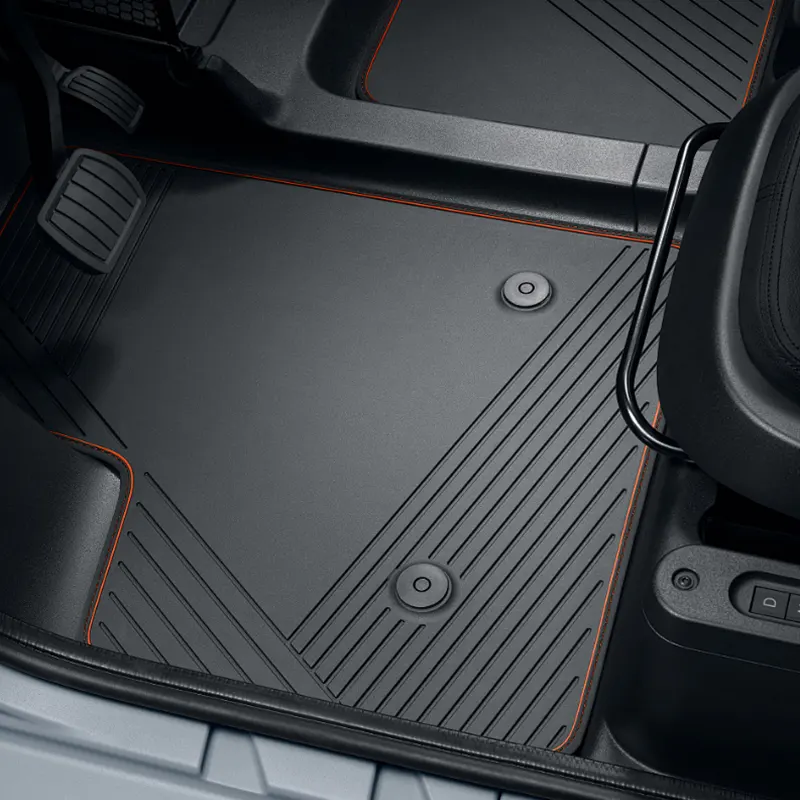When I first started upgrading my car, I thought style alone would keep me satisfied. Then winter hit, the trunk turned into a tool shed, and the upholstery took a beating. That was when I began testing Auto Accessories with a performance mindset. As my sourcing matured, I found myself leaning on partners like Far East for consistent specs and smoother logistics, and the way I evaluate Auto Accessories changed from impulse buys to problem solving.
Why do most drivers feel disappointed after their first round of upgrades?
Because the purchase solves symptoms rather than root causes. I map every decision to a real use case—rainy commutes, muddy trail runs, weekend road trips—and then choose Auto Accessories with materials, fitment, and warranty that match those scenarios. That shift alone cuts returns, keeps cabins cleaner, and saves me time.
- Noise and fatigue issues are better handled by proper liners and door-seal kits than by cosmetic trims.
- Spills and grit call for deep-channel floor mats instead of flat carpets that trap moisture.
- UV fade and cracked dashboards need coated sunshades, not thin foil that curls after a week.
Which upgrades deliver the fastest real-world wins?
- Cargo solutions keep groceries upright and tools from rolling; collapsible organizers with rigid bases are the quiet heroes.
- All-weather floor systems with high wall height stop salt and coffee from seeping under carpets.
- Phone mounts with metal pivots survive summer heat where plastic ball joints sag.
- Window visors let me vent heat in rain without drips and reduce wind buffeting at highway speed.
If I need quick, visible gains, these are the Auto Accessories I reach for first because they protect high-value surfaces and cut cabin noise immediately.
How do I check materials so the accessories survive all four seasons?
I look past marketing names and read the technical layer: TPE vs. PVC for flexibility in the cold, silicone vs. EPDM for seals, and 600D vs. 1680D fabric for cargo gear. This is where reliable lines coordinated through Far East help, because spec sheets match labels and batch quality stays steady across orders, which matters when scaling Auto Accessories for fleets or repeat buyers.
| Accessory | Pain point solved | Material to look for | Typical install time | Expected lifespan | What I learned |
|---|---|---|---|---|---|
| All-weather floor mats | Salt, spills, trapped moisture | TPE with raised channels | 5–10 minutes | 3–5 years | High side walls matter more than patterns |
| Sunshade | Cabin heat, UV cracking | Multi-layer reflective core with edge binding | Instant | 2–3 summers | Edge tape stops fraying and curling |
| Cargo organizer | Rolling items, rattles | Rigid base + 600D or 1680D polyester | 1–2 minutes | 3+ years | Velcro feet prevent slide on carpeted trunks |
| Door seal kit | Wind noise, dust ingress | EPDM or silicone with hollow core | 20–30 minutes | 4–6 years | Alcohol wipe prep is non-negotiable for adhesion |
| Phone mount | Sagging, vibration | Metal pivot, strong clamp, felt pads | 2–3 minutes | 2–4 years | Vent mounts need offset arms to clear louvers |
How do I guarantee fitment and avoid returns?
I always confirm trim level, model-year span, and any mid-cycle refresh quirks before ordering Auto Accessories. If the listing does not show exact contours or SKU mapping, I skip it. For mats and visors, I check for laser-scan or vehicle-specific molds instead of “universal”.
- Match VIN or trim codes when possible to ensure contour accuracy.
- Read installation PDFs or quick guides to spot missing clips or tabs.
- Check photo angles for seat-rail clearance, pedal sweep, and airbag zones.
Do premium accessories really save money over time?
Yes—if they protect high-value surfaces or reduce time spent cleaning. Quality Auto Accessories cost more upfront, but I replace cheap mats twice as often and still scrub stains. A good cargo liner prevents one spill from becoming a detailing bill.
What should I verify from a supplier before committing?
- Consistency means batch-to-batch color and mold stability, especially for multi-piece kits.
- Documentation includes REACH or RoHS compliance where relevant, and clear warranty terms.
- Packaging needs edge guards and flat-pack options so products arrive without creases.
When I coordinate orders through partners like Far East, the spec sheets, carton markings, and QC photos line up with what I receive, which keeps my listings accurate and my return rate low for Auto Accessories.
How do I build a simple checklist before buying?
- Does the accessory solve a specific problem I actually have?
- Is the material right for my climate and usage pattern?
- Is fitment confirmed for my exact year and trim?
- Are there installation tools or cleaners included or recommended?
- Is the warranty credible and easy to claim?
If I can say yes to those five, I’m confident the Auto Accessories will earn their place in my car.
Where should I start if this is my first upgrade cycle?
I start with protection, then convenience, then style. Floor systems, cargo liners, and sun management create immediate value. After that, mounts, organizers, and subtle trim add comfort. By the time I consider visual tweaks, the essentials already pay off, and my cabin still feels new thanks to smarter choices in Auto Accessories.
Would you like tailored recommendations for your vehicle today?
If you want a shortlist matched to your model and climate, send your year, trim, and daily routine. I’ll map the best Auto Accessories to your use cases and budget. For quotes, lead times, or private-label options powered by reliable lines coordinated through Far East, please contact us with your inquiry and I will reply with a detailed spec and pricing sheet.
